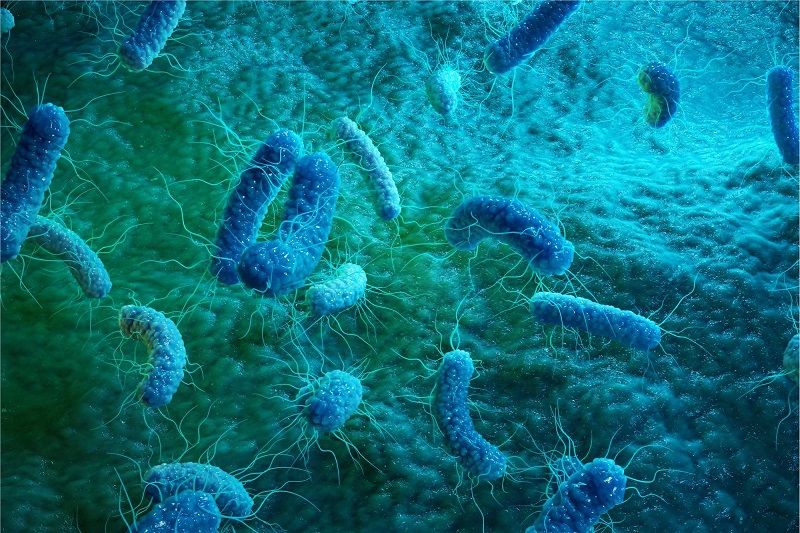In the ever-evolving field of bacterial infection research, accuracy and reliability are paramount. Creative Biolabs rises to this challenge by offering customized primer and probe design and synthesis services for specific bacterial strains. Our commitment to quality and innovation ensures that researchers and businesses have access to the best research tools.

| Item | Primer | Probe |
| Definition | A primer is a short single-stranded DNA or RNA sequence used as the starting point for DNA synthesis in PCR (Polymerase Chain Reaction). | A probe is a specific DNA or RNA sequence used to detect the presence or absence of a target DNA or RNA sequence. They are often labeled with fluorescent or other reporter molecules. |
| Application |
1. Used for PCR amplification of specific DNA sequences. 2. Serves as a starting point in DNA sequencing. 3. Used in molecular cloning and genetic engineering. |
1. Used in nucleic acid hybridization experiments, such as Southern and Northern blotting. 2. Detects specific genes or regions in Fluorescence in situ Hybridization (FISH). 3. Used for detection and quantification of specific gene expression. |
| Working Principle | Primers bind to complementary sequences on the template DNA, providing a starting point for DNA polymerase and promoting the extension of the DNA strand. | Probes bind to specific sequences of the target DNA or RNA and emit signals through their labeled reporter molecules, indicating the presence of the target sequence. |
| Types |
1. Standard primers 2. Modified primers (e.g., biotin, fluorescent tags) |
1. Labeled probes (e.g., fluorescent probes) 2. Molecular beacon probes. 3. Dual-quenched fluorescent probes |
Precision in primer design and high-purity synthesis are crucial for ensuring the reliability and reproducibility of experimental results. Hence, we employ a variety of purification methods to meet diverse application needs, ensuring that our primers perform optimally under different experimental conditions.
| Purification Method | Features | Application Range |
| Oligonucleotide Purification Cartridge (OPC) Purification | OPC uses special purification media to remove incompletely synthesized primer fragments and impurities, enhancing primer quality and experimental accuracy. | PCR amplification, subcloning, site-directed mutagenesis, gene synthesis, DNA sequencing |
| Polyacrylamide Gel Electrophoresis (PAGE) Purification | PAGE offers high resolution, suitable for processing large fragment primers, ensuring high purity and precise length. | Site-directed mutagenesis, cloning, protein gel electrophoresis analysis |
| High-Performance Liquid Chromatography (HPLC) Purification | HPLC ensures high purity and consistency of primers, applicable to various primers, including those with special purification needs like modified primers. | Synthesis of modified primers, commercial diagnostic primers or probe synthesis |
Our advanced level of modified primer/probe design and synthesis service is specifically tailored for the complex needs of scientific research and clinical diagnostics. Whether it's enhancing molecular stability, improving specificity in recognition, or amplifying signal detection, our meticulously formulated modification services ensure that primers and probes function at their best. Our services are not only diverse and comprehensive but also offer a range of customized modification options to precisely meet your specific needs.
| Modification Type | Explanation | Application Range |
| Fluorescent Group | Endows the primer with fluorescent properties, facilitating the tracking and identification of specific DNA or RNA sequences in fluorescence detection experiments. | Visualization detection of target sequences |
| Quenching Group | Used in FRET (Fluorescence Resonance Energy Transfer) probes, in combination with fluorescent groups, it can alter the fluorescence signal under specific conditions. | Synthesis of FRET probes |
| Linker Chemistry Group | Provides chemically active sites, enabling the primer to undergo specific chemical reactions or bindings with other molecules (such as proteins or small molecules). | Facilitating binding of the primer with other molecules |
| Amino Modification | By adding amino groups to the primer, different labels or molecules can be further attached, increasing the primer's functionality and diversity. | Linking chemistry groups and spacers |
| Nucleotide Base Modification | Altering the chemical structure of nucleotides enhances the specificity and stability of the primer, aiding in improving the accuracy of experiments. | Altering binding properties of the primer |
| Degenerate Bases | Introducing bases with multiple pairing possibilities into the primer sequence allows the primer to recognize multiple target sequences, increasing its applicability. | Enhancing primer adaptability |
| Spacer Arm | Provides spatial distance between the primer and its target, enhancing the binding flexibility and efficiency of the primer. | Improving interaction efficiency between primer and target |
If you are conducting infectious disease research and require precision-customized primers or probes for specific bacterial strains, please contact us. Creative Biolabs is dedicated to providing professional primer/probe design and synthesis services to meet your precise needs for specific bacterial strain research.